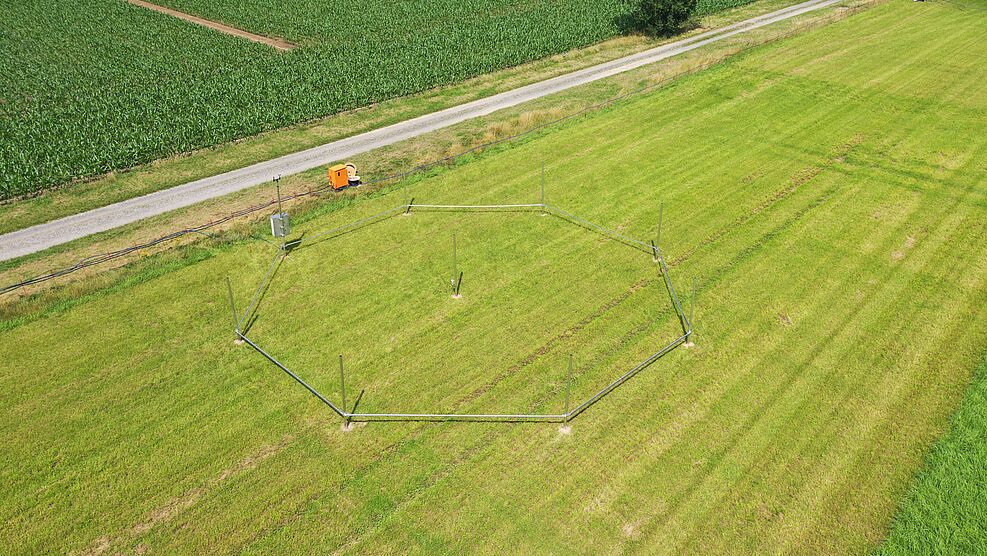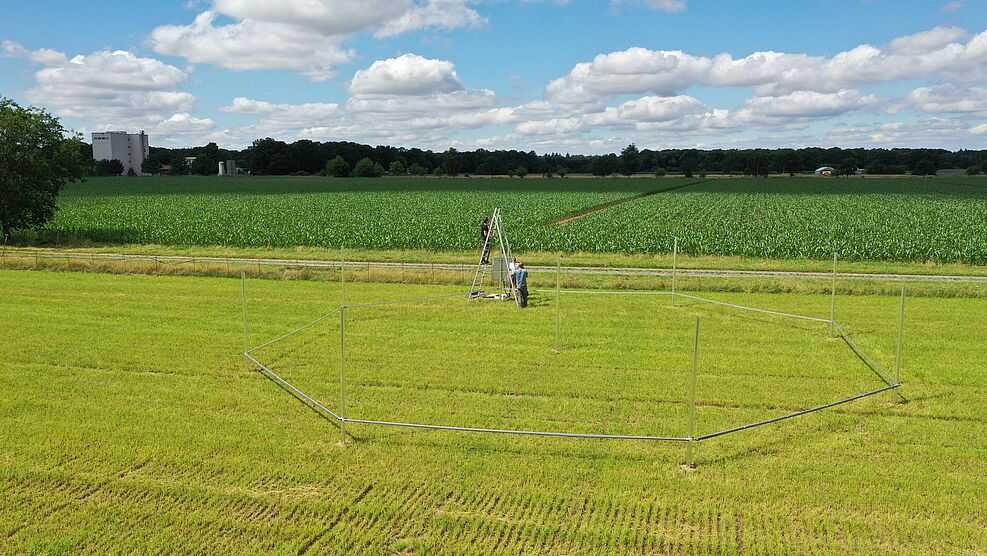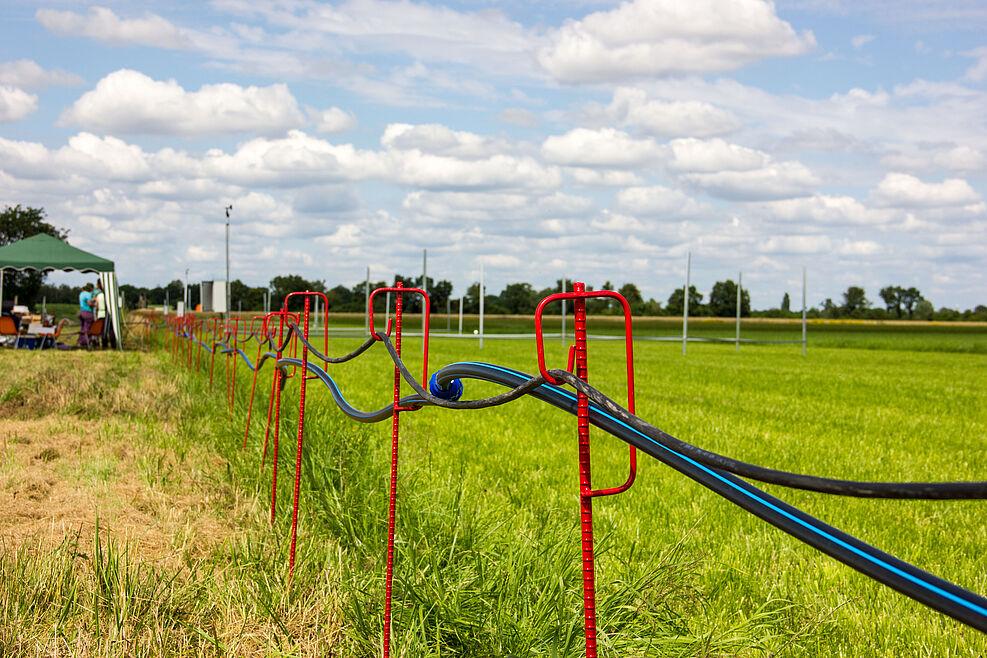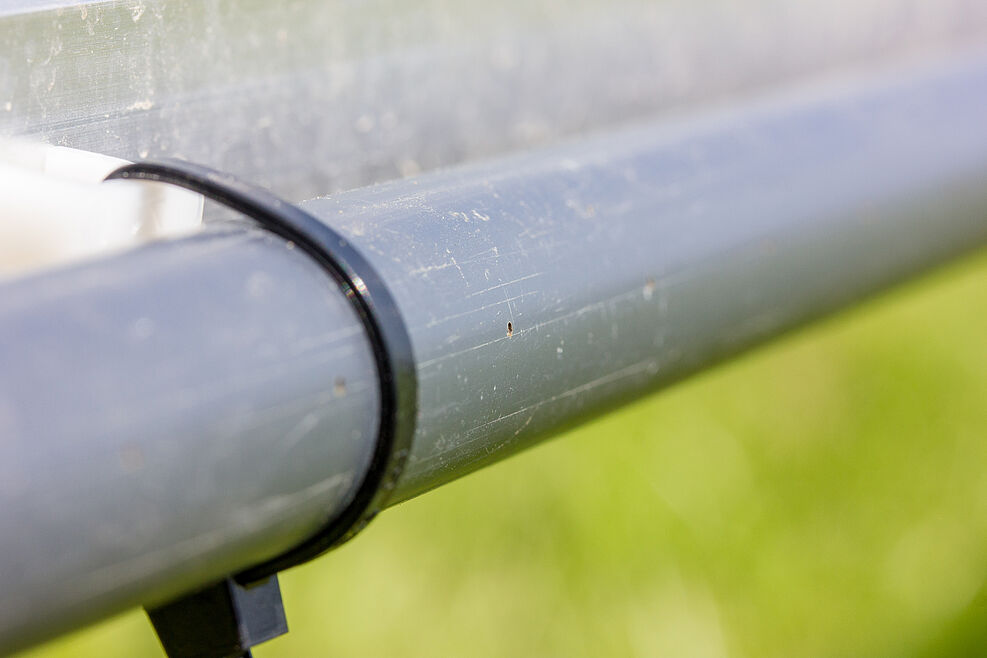The abbreviation FACE stands for "Free Air Carbon Dioxide Enrichment" and describes a facility for outdoor experiments in which different carbon dioxide concentrations can be specifically adjusted. Since mid-July (2021) such a facility has been newly set up at the JKI's experimental field in Braunschweig (Brunswick). Concentrations of the greenhouse gas in the atmosphere have been rising since the beginning of industrialisation to currently 410 ppm (parts per million) and are continuing to increase steadily. In this context the JKI wants to identify how crops react to the predicted increase in CO2 and how breeding research can help with long term adaption, in order to make optimum use of the so-called „CO2 fertilisation effect“. The JKI Institute of Crop and Soil Science provides technical support for the installation. Dr Lorenz Kottmann supervised the construction work and will start regular trials next year as part of the new JKI project WheatFACE.
Colleagues from the Institutes of Crop and Soil Science, Resistance Research and Stress Tolerance and Plant Protection in Field Crops and Grassland are cooperating in the WheatFACE project. Within the framework of the experiment, different genotypes of winter wheat will be exposed to different CO2 concentrations, and parameters on photosynthesis, yield physiology and agronomic characteristics as well as data on the pathogens brown rust and ear fusarium will be collected. The results shall provide the researchers with clues for the adaptation of winter wheat to future climate scenarios.
With a diameter of 17.5 metres, the new FACE facility at the JKI is currently the largest in northern Germany. A smaller facility is located at the agricultural research station of the University of Hohenheim, another one for topics relating to viticulture and horticulture at the Geisenheim University of Applied Sciences. The university in Gießen operates a facility for grassland trials. Only the Jülich Research Centre operates a facility of the same type for arable crops that is comparable to the JKI one. According to Dr Kottmann, the Jülich and Braunschweig sites would complement each other perfectly: Since soil in Braunschweig is much sandier than the one present in Jülich, drought stress conditions could be simulated in Braunschweig and generated data subsequently be compared with the results in top soil conditions like Jülich does have them.
How the field test facility works:
The facility consists of a total of four units (octagons) with diameters of 17.5 metres. Within the octagonal structures, the CO2 concentration of the air is increased. For this purpose, the CO2 is led from a tank system via 500-metre-long pipelines to the field. There it flows through tubes running outside the octagon, which are perforated with tiny wholes drilled by lasers. Depending on wind direction and speed, the CO2 is discharged from different directions into the center. For this purpose, an anemometer continuously measures wind direction and speed. In the middle of the system, a sensor measures the CO2 content of the air, while a control unit regulates the required amount of CO2. Inside the FACE facility, the CO2 concentration in the air can be increased up to 1000 ppm. In the WheatFACE project, a concentration of about 600 ppm is targeted, which corresponds to the estimated carbon dioxide content of the atmosphere in 40 to 50 years.




